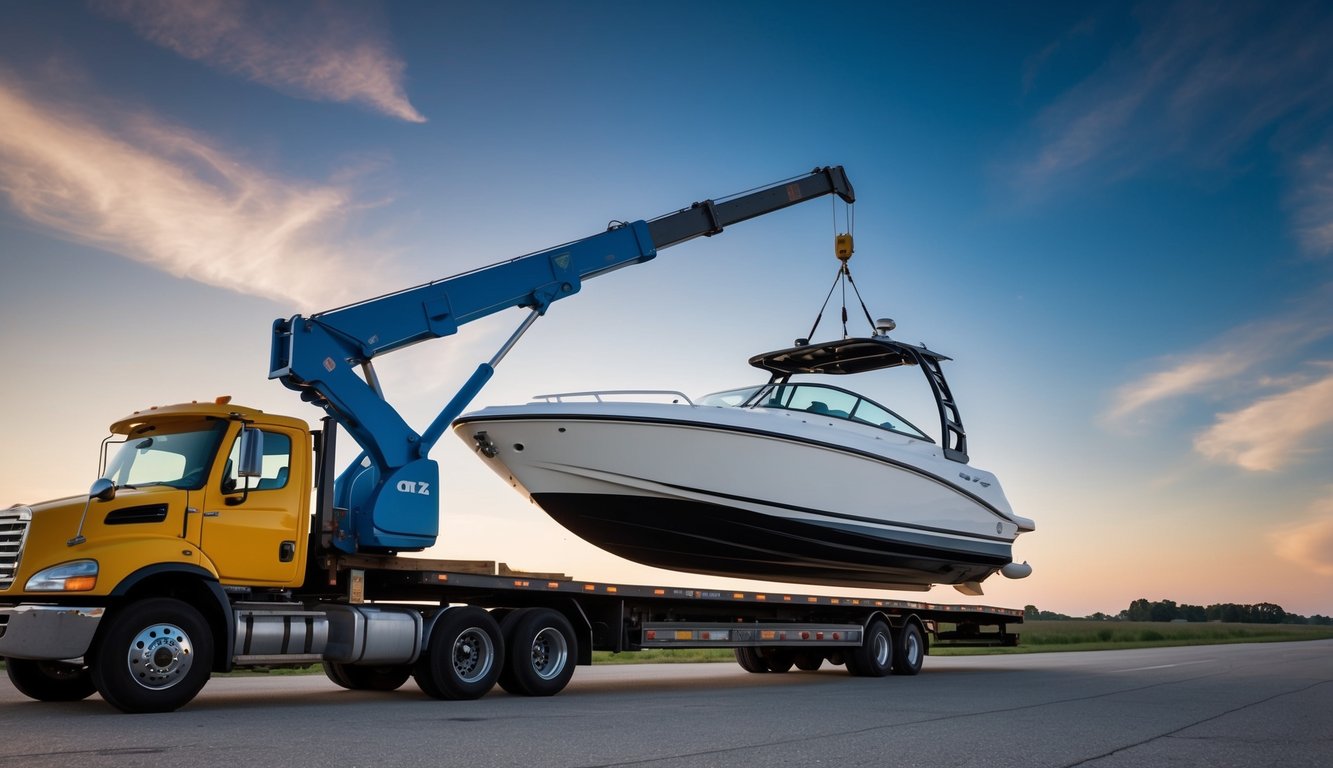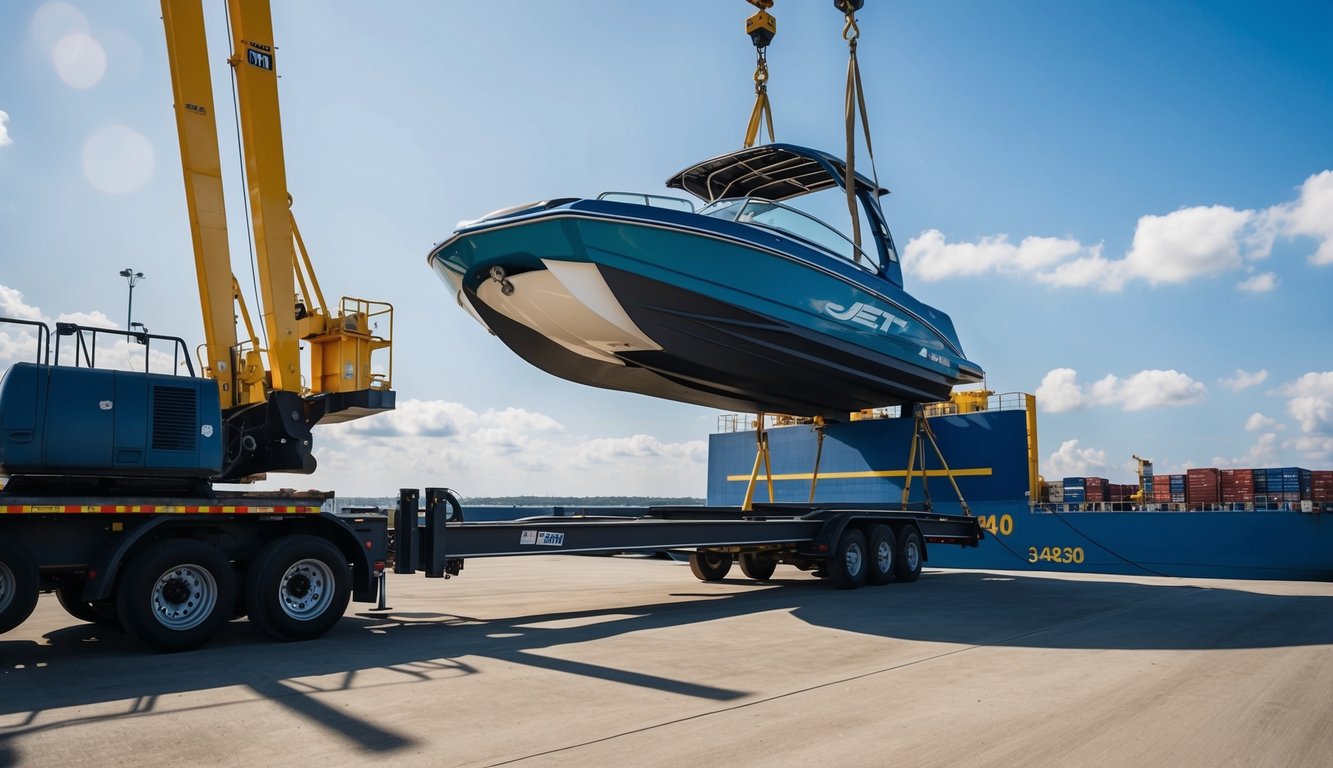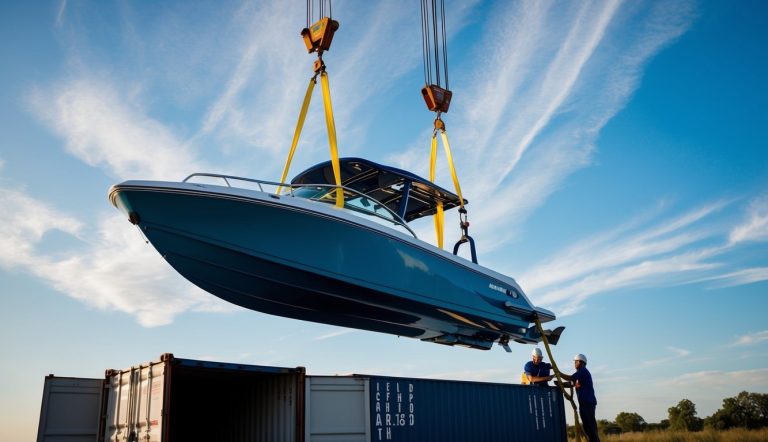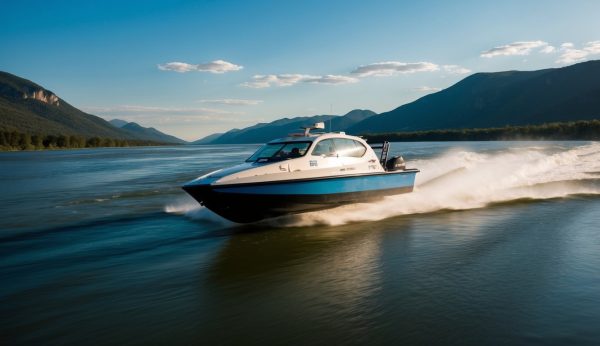Understanding Jet Boat Shipping Without a Trailer
Yes, you can ship a jet boat without a trailer. This might seem challenging, but several effective methods exist for transporting your prized watercraft. The most common way to transport a boat without its trailer is using a flatbed truck. This option works well for smaller jet boats or those with flat hulls, as they can be secured directly to the truck bed.
Professional boat transport companies often use specialized hydraulic trailers that can slide under your vessel. These services typically cost between $15,000-$20,000 depending on distance and boat size. Some boat owners choose to hire transport services that specialize in moving boats without trailers. These companies have the right equipment and expertise to move your vessel safely.
Important documents to prepare:
- Certificate of title
- Insurance paperwork
- Temporary operating receipt (if applicable)
- Written authorization for transport
When shipping your jet boat, all personal items and removable accessories should be taken out. This reduces weight and prevents damage during transit. Professional boat haulers may also use specialized cradles or supports designed specifically for your boat’s hull type. This ensures your jet boat remains stable throughout transportation. For larger vessels, commercial towing services with experience in jet boat handling provide a reliable option. They understand the specific needs of your watercraft and can transport it without causing damage.
Shipping Options for Jet Boats

When transporting a jet boat without a trailer, you have several practical methods to consider. Each option offers different benefits based on your boat’s size, your budget, and how far it needs to travel.
Professional Boat Transport Services
- Professional transporters specialize in moving boats safely over long distances. These companies have the equipment and expertise to handle jet boats of various sizes. They typically use specialized trailers designed to support boats properly during transit.
- Most professional services offer door-to-door delivery, saving you the hassle of coordinating multiple transportation legs. They also handle all necessary permits and route planning.
- Costs vary based on distance, boat size, and service level. Basic transport ranges from $1.50 to $3.50 per mile for smaller jet boats. Insurance is typically included, but always verify coverage limits before signing a contract.
- Professional transporters also provide tracking updates so you can monitor your boat’s journey. This option is ideal if you’re shipping long-distance or have a valuable vessel.
Using a Flatbed Truck
- Flatbed trucks offer a versatile option for transporting jet boats without a dedicated boat trailer. This method works well for medium distances and provides good flexibility.
- You’ll need to ensure your boat is properly secured with appropriate straps and cradles. Most flatbed trailers can accommodate jet boats up to 26 feet, though weight restrictions apply.
- Protection is crucial with this method. Use padding on all contact points between the boat and the truck bed. Cover the boat with a marine-grade tarp to protect it from road debris and weather.
- If renting a flatbed, check weight capacities carefully. Most standard flatbeds can handle up to 8,000 pounds, but jet boats with engines can approach this limit.
- Consider hiring a driver experienced with oversized loads if you’re not comfortable towing yourself. This adds cost but reduces your risk.
Alternative Shipping Methods
- For long-distance transport, especially overseas, container shipping provides excellent protection. If your jet boat is small enough, it can fit inside a standard 40-foot shipping container. This offers complete protection from elements and potential damage.
- Roll-on/Roll-off (RoRo) shipping is another option for larger vessels. Your boat is driven onto a specialized ship, secured, and then driven off at the destination. Lift-on/Lift-off (LoLo) shipping uses cranes to place boats onto cargo ships.
- For very large jet boats, specialized hydraulic trailers that adjust to the boat’s hull can be used. These don’t require your personal trailer and provide excellent support.
- Remember to drain all fluids and disconnect batteries before any shipping method. Also, remove or secure all loose items that could shift during transport and cause damage.
Cost Factors in Shipping a Jet Boat Without a Trailer

Shipping a jet boat without a trailer involves several key expenses that affect the total price. Understanding these costs helps you budget properly and avoid surprises when arranging transport.
Distance and Location Impact on Pricing
- The distance your jet boat travels significantly affects shipping costs. Boat transport rates typically range from $1.25 to $15.00 per mile, with longer distances often providing better per-mile rates. Cross-country shipping generally costs less per mile than short regional moves.
- Your pickup and delivery locations also matter. Remote areas or locations with difficult access cost more due to extra time and resources needed. Coastal cities with regular boat shipping traffic tend to offer more competitive rates.
- Seasonal timing affects pricing too. Summer months (peak boating season) often come with higher transport costs due to increased demand. You’ll find better rates during off-season periods when transporters have more availability.
- Different regions have varying pricing structures. Shipping within high-traffic boating states like Florida may cost less than shipping to or from areas with less marine infrastructure.
Special Handling and Oversize Load Fees
- Jet boats without trailers require specialized equipment for loading and unloading, which adds to your total cost. Hydraulic trailers, cradles, and special rigging equipment all factor into the price.
- Width and height measurements matter significantly. Boats wider than 12 feet or taller than 13’6″ qualify as “oversized loads” requiring special permits. These permits vary by state and can add $100-$500 to your shipping costs.
- Professional loading and unloading services add another expense layer. Without your own trailer, you’ll need crane services or specialized equipment at both pickup and delivery points. This typically costs $250-$500 per operation.
- Insurance premiums increase for traillerless transport due to higher risk. Most transport companies require insurance coverage of at least the boat’s full value, with premiums typically ranging from 1-5% of the declared value.
- Extra services like shrink-wrapping, detailing, or mechanical preparation may be necessary and add to your total expense.



